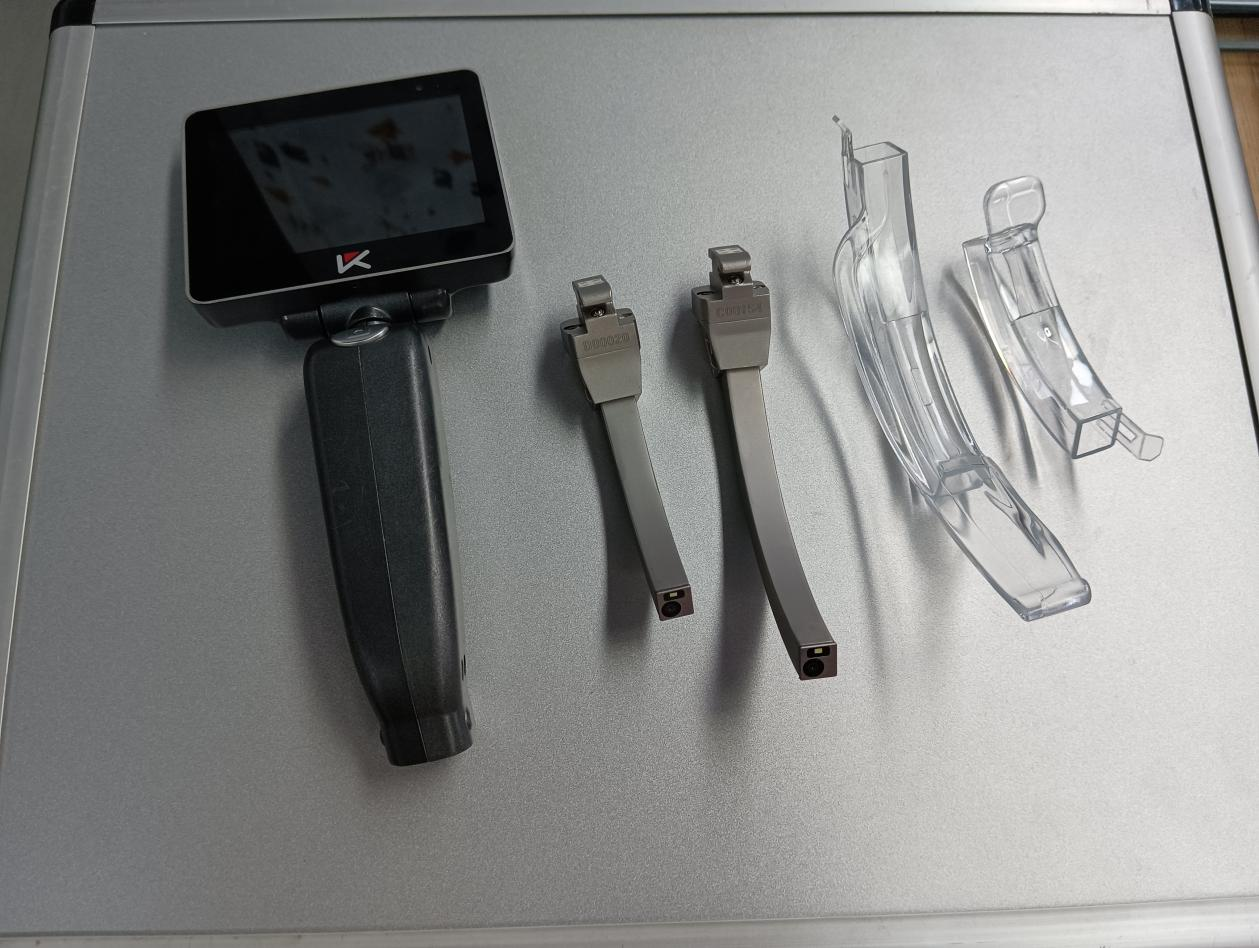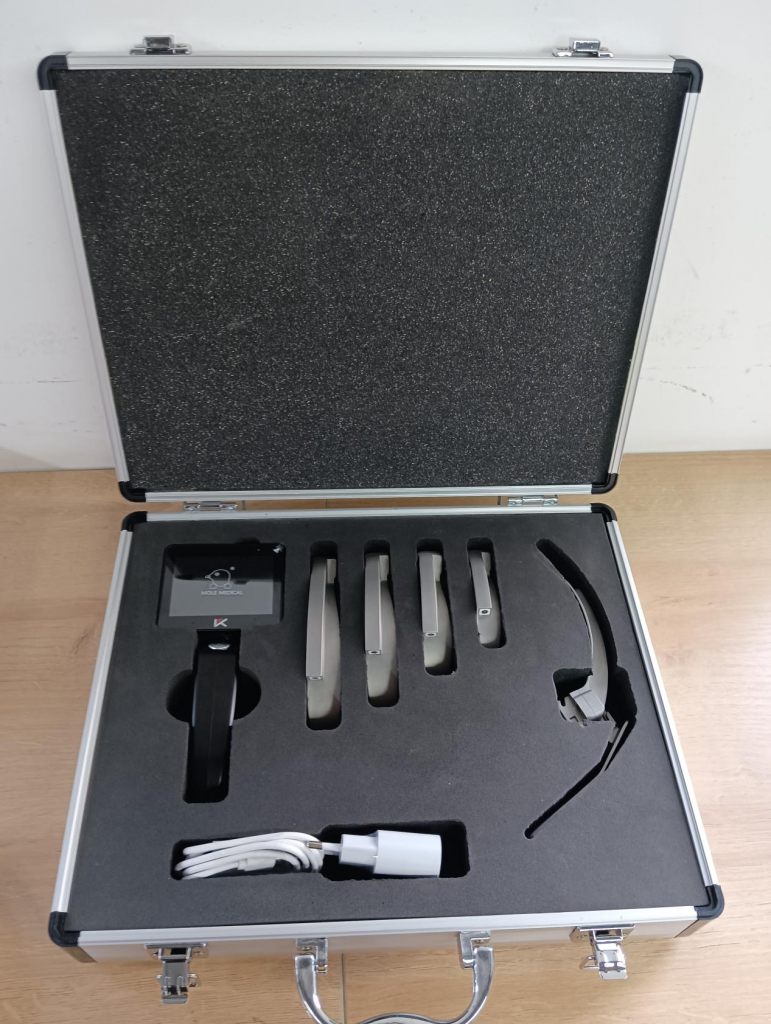Understanding Anesthesia Laryngoscopes – Key Uses
Dec 23, 2023
Anesthesia laryngoscopes are among the most important pieces of equipment in surgical anesthesia. These devices, used by anesthesiologists and other medical professionals, play a crucial role in managing the airway during surgery. With the aid of advanced anesthesia equipment, patients can receive the care they need without complications.
Key Takeaways
- Anesthesia laryngoscopes are vital in surgical settings
- These devices aid in managing the airway during surgery
- Advanced anesthesia equipment has significantly improved patient care
Functions of Anesthesia Laryngoscopes
Anesthesia laryngoscopes are specialized devices used in surgical settings for managing the airway and facilitating laryngoscopy procedures. These devices allow anesthesia providers to visualize the larynx and other structures in the airway to ensure proper placement of endotracheal tubes or other airway devices.
Laryngoscopy techniques used with anesthesia laryngoscopes may include direct or video laryngoscopy, and the choice of technique depends on the patient’s anatomy, the surgical procedure, and other factors. Anesthesia monitoring is also crucial during the procedure to ensure patient safety. Common laryngoscope procedures performed in surgical anesthesia include intubation, tracheostomy, and bronchoscopy.
Overall, anesthesia laryngoscopes play a vital role in airway management and are essential in ensuring successful surgical outcomes. As technology continues to advance, these devices will remain critical in improving anesthesia techniques and patient care.
Advancements in Anesthesia Laryngoscopes
Over the years, there have been significant advancements in anesthesia laryngoscopes and their associated technology. Newer laryngoscope devices have been developed, improving anesthesia techniques and contributing to better patient outcomes. These advancements have propelled the field of anesthesia forward and revolutionized the way doctors manage patients during surgery.
The latest laryngoscope devices are smaller and more portable, allowing for easier use and better outcomes. They require less force to manipulate the device, reducing the risk of tissue trauma and ensuring a safer procedure. Additionally, these devices come equipped with advanced features such as video monitors and high-resolution cameras, providing an enhanced view of the airway and improving the accuracy of laryngoscope procedures.
Advancements in anesthesia techniques have also been made, with new methods being developed to improve patient safety. One such technique is the use of ultrasound during intubation, which helps to ensure proper placement of the breathing tube. Another technique involves the use of neuromuscular blocking agents to create a relaxed environment during surgery, improving patient comfort and reducing complications.
The impact of these advancements in laryngoscope technology and anesthesia techniques on patient outcomes has been substantial. Patients experience less discomfort during surgery, and there is a reduced risk of complications such as tissue trauma and failed airway management. Moreover, these advancements have made anesthesia procedures safer and more efficient than ever before.
Overall, the advancements in anesthesia laryngoscopes and associated technology have greatly improved the field of anesthesia. With continued research and development, it is likely that we will continue to see even further improvements in the years to come.
Airway Management with Anesthesia Laryngoscopes

Anesthesia laryngoscopes play a crucial role in ensuring effective airway management during surgical procedures. These devices aid in maintaining a patent airway, which is essential for proper ventilation and oxygenation of the patient.
There are various anesthesia techniques used in conjunction with laryngoscopes, such as endotracheal intubation and supraglottic airway devices. These techniques aim to provide optimal airway control while minimizing discomfort and trauma to the patient.
Proper anesthesia management is also critical for patient safety during airway management with laryngoscopes. Anesthesia professionals must carefully monitor patient breathing, heart rate, and blood pressure to prevent complications such as hypoxia, bradycardia, and hypotension.
Overall, anesthesia laryngoscopes are a valuable tool in airway management and contribute to successful surgical outcomes. The advancements in technology continue to enhance these devices and improve anesthesia techniques, resulting in better patient care.
Conclusion
Overall, anesthesia laryngoscopes are essential tools for managing a patient’s airway during surgical anesthesia. By providing a clear view of the airway, these devices facilitate a variety of laryngoscopy procedures and help ensure proper anesthesia management for patient safety.
Thanks to advancements in technology, anesthesia laryngoscopes have become more sophisticated, allowing for greater precision and improved patient outcomes. As such, these devices have become an integral part of modern surgical anesthesia, providing an essential tool for anesthesiologists and other medical professionals.
Whether it’s through the use of advanced laryngoscope devices or innovative anesthesia techniques, the continued development of anesthesia laryngoscopes is sure to pave the way for further progress in the field of surgical anesthesia.
Therefore, it is crucial for medical professionals to stay up-to-date with the latest advancements in anesthesia laryngoscopes, ensuring that they are equipped with the necessary knowledge and skills to provide patients with the highest level of care.
Anesthesia laryngoscopes are an essential aspect of surgical anesthesia, contributing to better patient outcomes and improved anesthesia techniques. As such, they play a critical role in modern medicine, and their continued development and advancement will only further contribute to patient safety and well-being.
Categories
Latest Articles

Disposable Nephroscopes: Redefining Safety & Efficiency in Urology
Introduction The shift towards minimally invasive urological surgery has found a pivotal ally: the disposable nephroscope. As traditional reusable scopes grapple with persistent biofilm contamination risks and soaring sterilization costs, the global medical community is rapidly adopting single-use solutions. This article analyzes the clinical value, technological evolution, and dynamic innovation landscape driving this transformative shift. ... Read more

Disposable Video Laryngoscope Blades: The Ultimate Solution for Preventing Cross-Contamination
In the operating room, as the cold light of a video laryngoscope illuminates a patient’s airway, an age-old medical challenge is being redefined: How can life-saving instruments avoid becoming vectors of infection? Jiangsu MoleMedical drives an innovative safety revolution—replacing reusable devices with single-use, sterile laryngoscope blades that create a pure barrier for critical airways. Traditional video ... Read more
-2.jpg)
FDA & CE Approved Video Laryngoscope: What Makes It Stand Out?
Introduction In high-pressure emergencies and precision-driven operating rooms, video laryngoscopy is revolutionizing airway management. Mole Medical’s FDA and CE-certified technology replaces tactile-dependent “blind intubation” with real-time visual navigation – enhancing safety, accuracy, and clinical outcomes worldwide. Why Certification Matters Mole Medical’s dual certifications validate its global compliance and performance: FDA Clearance: Rigorous validation of safety/efficacy ... Read more

Mole Medical Showcases Advanced Endoscopy Solutions at CMEF Autumn 2025, Driving Global Partnerships
Guangzhou, China – September 26-29, 2025 – The 92nd China International Medical Equipment Fair (CMEF Autumn) concluded successfully on September 29th at the Canton Fair Complex in Guangzhou. Mole Medical Technology Co., Ltd. (Mole Medical) made a significant impact at the event, drawing global medical professionals and partners to its booth (Hall 2.1, Stand Q24) ... Read more

How to Use Disposable Ureteroscopes Safely and Efficiently
In the field of urology, the application of disposable electronic ureteral-kidney pelvis endoscopy catheters is leading the technological innovation in minimally invasive surgeries. According to the 2024 multi-center research data from China’s urology department, among the over 5,000 surgeries included, the patient group using disposable catheters performed significantly better in key indicators such as operation ... Read more



